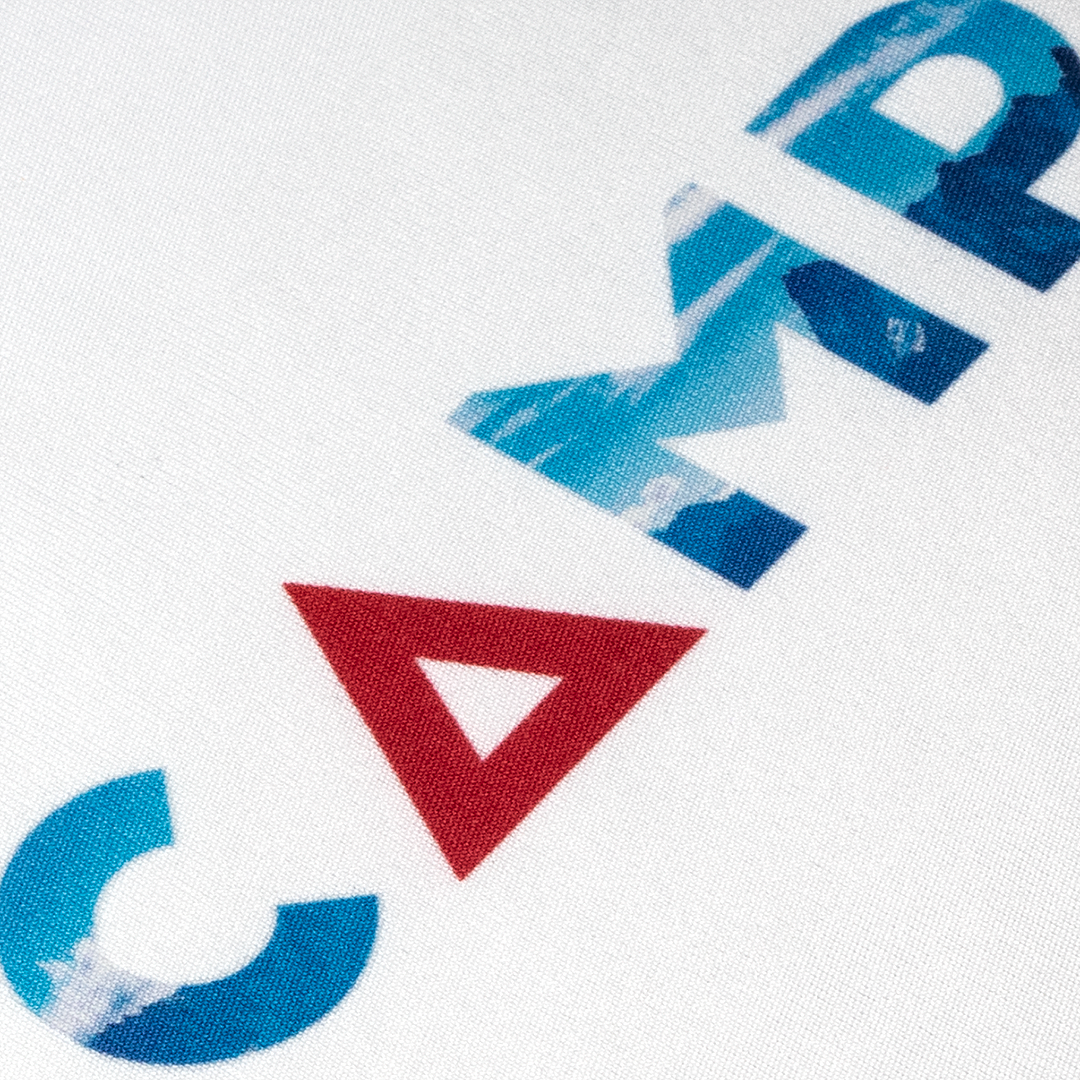Sublimation Printing
With sublimation printing, the image isn’t transferred on the surface of the product, rather, it is infused inside the material in such a way that it’s not possible to feel the difference by hand whether the surface has received a print or not. This ensures a good durability of the print – it won’t wear off, the dye doesn’t reduce the breathability of the fabric and it stretches with the product without cracking.
Technology
Sublimation dyes are translucent which usually means the process is done on products with white surfaces. It is possible to print on coloured surface but then it has to be taken into account that the colour of the base fabric will mix with the colour of the sublimation dye and the final colour tones will change. For example, if printing blue dye over a yellow shirt, a greenish-blue colour emerges as a result. It’s possible to print with black dye on coloured products.
- Inverted image is printed with a sublimation printer on a special transfer paper.
- Transfer paper is put against the product, printed side facing down, and heated under the press for a certain amount of time. During the heating process, dye will turn from solid state into gas and the molecules of the dye will infuse inside the material of the product.
As a printer is used for printing the image, printer’s own dimensions and paper size set a limit to the size of the final print. We can offer printing images in sizes up to A3 (297 X 420 mm). It’s not possible to print over the seams as the pressure of the press is uneven near the seams which means the dye won’t infuse correctly inside the product.
Which products are suitable for sublimation printing?
Sublimation printing can be used on various clothes and other textile products (umbrellas, bags, towels, aprons, tube scarves) if the fabric is at least 70% polyester and on hard-surfaced products (mugs, thermos mugs, puzzles, suitcase labels) if the surface is coated with a special layer.
With textile products it’s important to keep in mind that the product can sustain the temperature of at least 200 °C without its texture changing under the press – in some cases, a strong press impression might be left on the fabric following the heating process. That’s why we recommend using special shirts made for sublimation printing, other textiles require some experimenting beforehand.
Sublimation printing is especially suitable for sport shirt printing as it’s durable against frequent washing and doesn’t reduce the breathability of the product. As there’s no complicated preparation process and the price doesn’t depend on the number of printable colours, sublimation is suitable for printing in small quantities or single products.
In case a small quantity of mugs printed in several colours or custom names is required quickly, sublimation printing is also the best solution.
What are the requirements for the design files?
To transfer the logos on the products with sublimation printing, formats including both vector graphics and image (raster) graphics are acceptable. Suitable file formats are: .pdf, .cdr, .ai, .eps, .jpg, .png, .tif, .psd. In a vector file format, texts should be changed into curves (into vector images). Image files should be in 1:1 size, with a resolution of 300ppi.
If you don’t have a suitable file, we can also help with a design service. Feel free to contact us.
How to place an order for heat press printing?
Send us your design. We will review it and put together a price estimate.
To calculate the price, we will need the following:
- The quantity of printable products.
- The size of the logo.





